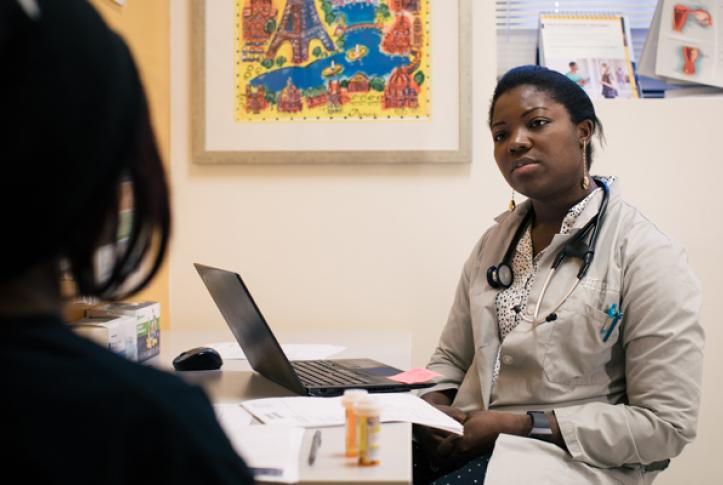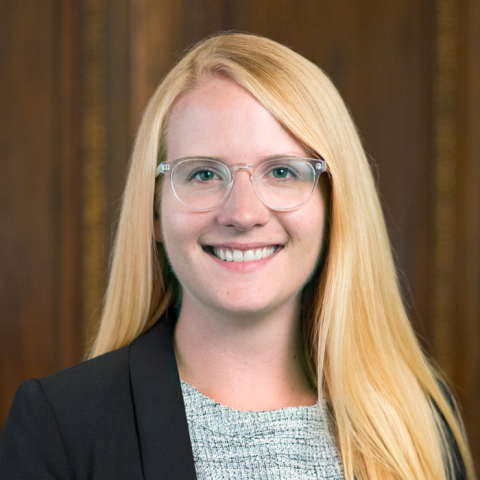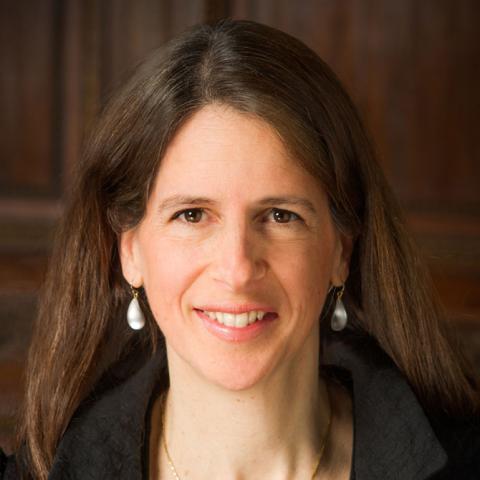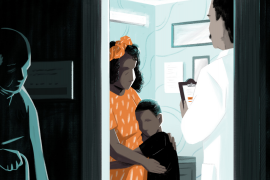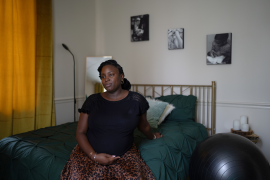This post serves as the final one for each of two series, “Listening to Low-Income Patients” and “Listening to Primary Care Physicians for Low-Income Patients,” that draw on focus groups and interviews with more than 100 individuals and more than 30 primary care clinicians.
High-quality primary care is critically important for health. Unfortunately, for low-income people, it often falls short of meeting needs. Over the past year and a half, the Commonwealth Fund held focus groups with more than 100 low-income patients and 30 primary care physicians (PCPs) serving them. Patients and their doctors identified several barriers that hinder access and ability to provide high-quality primary health care and discussed potential solutions. While numerous options for improvement exist, here we discuss a handful of policies and practices that could address these problems.
Financial Barriers to Care
Many low-income patients in our focus groups avoided going to the doctor and getting needed tests because of cost. Because appointments were often not available outside normal business hours, they struggled to get paid time off from work and could not afford to forgo income to visit the doctor. The PCPs we spoke with were aware of these challenges and expressed concerns that these affordability barriers could lead to delayed care and more serious issues in the long term.
Several policies and practices could address financial barriers. First, expanded office hours and digital solutions like telehealth could help ensure patients can access care without forgoing income. Second, limiting out-of-pocket costs, like copayments for prescriptions and deductibles for tests, would help low-income patients get the preventive care they need. As one PCP said, “These are people who make less than $30,000 a year. They [have to choose between] putting food on the table and buying insulin.” Making sliding-scale fees available for uninsured people also would improve affordability.
Poor Access to Specialty Care
Low-income patients have a hard time getting specialty care, particularly in rural areas. In our focus groups, patients and their doctors described how difficult it was to get appointments with specialists either because few accept Medicaid or there are simply no providers in the area.
For primary care to fulfill its mission of keeping people healthy, it needs strong partnerships with specialty care. Increased Medicaid reimbursement for specialty care would help by encouraging more specialists to accept Medicaid patients. To expand the availability of specialists in rural communities, policymakers could offer incentives and training programs for practicing in them. States could expand residency programs in rural hospitals or offer tuition assistance and scholarships to providers who practice in rural areas. One PCP we spoke with said, “Why is it so difficult to recruit to rural America? Because our system, our nation, has to value what [PCPs] have to offer for anything to change.” Increasing access to telehealth also would improve access to specialists. While these solutions show promise, health care workforce supply, particularly in rural areas, is a growing challenge that will likely require a combination of policy solutions.
Not Enough Time
Low-income patients and doctors felt they did not have enough time together. PCPs expressed regret that they could not spend more time with patients and acknowledged that the limited visit time got in the way of high-quality primary care. They attributed the problem to declining and insufficient Medicaid reimbursement and a decreased number of providers.
Increased Medicaid reimbursement for primary care could allow PCPs to spend more time with low-income patients, help rebuild patients’ trust in health care, and even encourage more PCPs to accept Medicaid. One primary care physician said, “If reimbursements don’t go up, the best and the brightest won’t look to be physicians. You should expect fair compensation for the amount of work and for the trust that people put in us.” To ensure there are enough PCPs to meet demand, state Medicaid agencies could tighten primary care network adequacy standards in Medicaid managed care. These rules indicate how many providers must be in plan networks, and sometimes regulate the number that must be within a certain time or distance from patients.
Red Tape
Low-income patients and PCPs alike reported that red tape blocks needed care. Physicians often have difficulty getting prior approval from Medicaid for procedures or prescriptions. This was particularly salient for low-income patients who could not afford the service if it were not covered. PCPs felt they lost valuable time dealing with managed care companies to get tests and medications approved — time they could otherwise be spending with patients.
To ensure PCPs can provide timely, medically necessary, and appropriate care, and to reduce hassle and stress, payers — particularly Medicaid managed care companies — could be more flexible in their preauthorization and referral requirements. One PCP said, “It’s almost like insurance is demanding that we practice a certain way. [Managed care companies] should just give us the ability to order procedures. A lot of us don’t have time to be on the phone, so we’re wasting resources and patients are suffering because we’re not practicing as we should be.” Clinical decision support, i.e., technologies that help providers by presenting information at the point of service, also could replace prior authorization and thereby reduce red tape. These tools would automatically authorize appropriate procedures or provide treatment alternatives for noncompliant requests.
Mistrust
Many low-income patients said they did not trust the health care system, in large part because it had failed or even harmed them in the past. Several patients noted discrimination by providers and said they feared health care institutions because of it.
Health care systems could take steps to combat mistrust. Provider associations and health systems could prioritize provider training on culturally competent care, in particular, training to address long-standing bias. In addition, community health workers — trusted members of the community who help patients navigate the health care system — have been shown to improve access to care, adherence to treatment, and patient satisfaction. Finally, practices could partner with community-based organizations to build relationships and trust, engage patients through patient advisory councils, or add patients to their boards.
